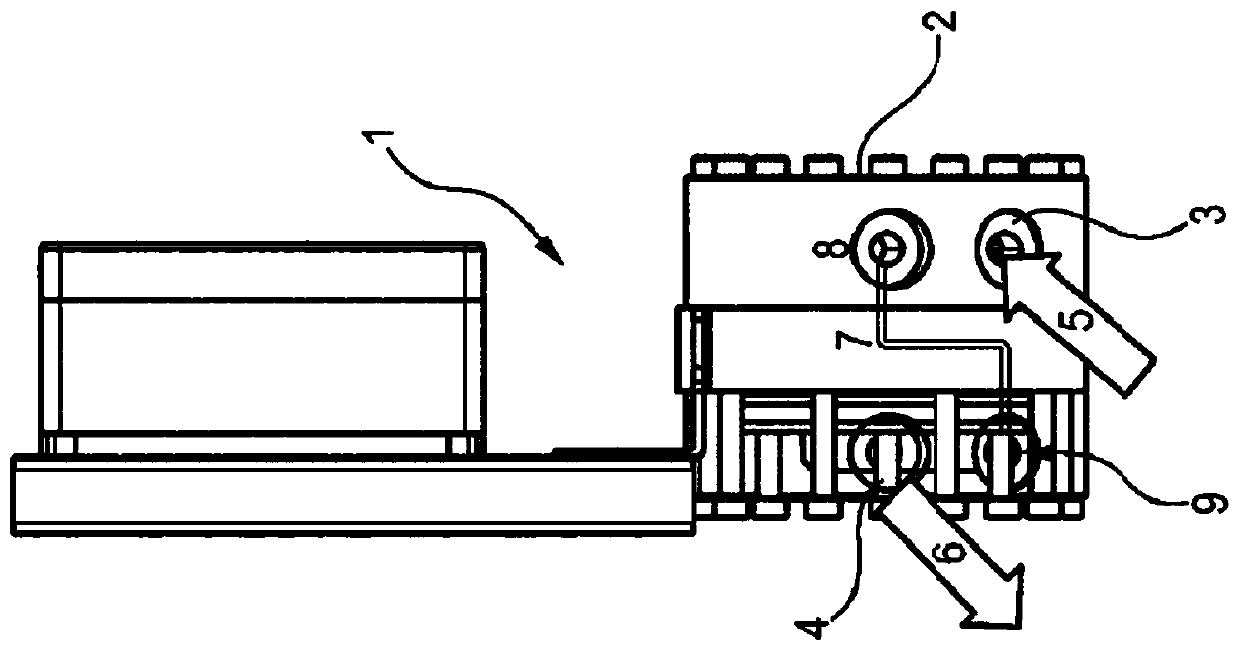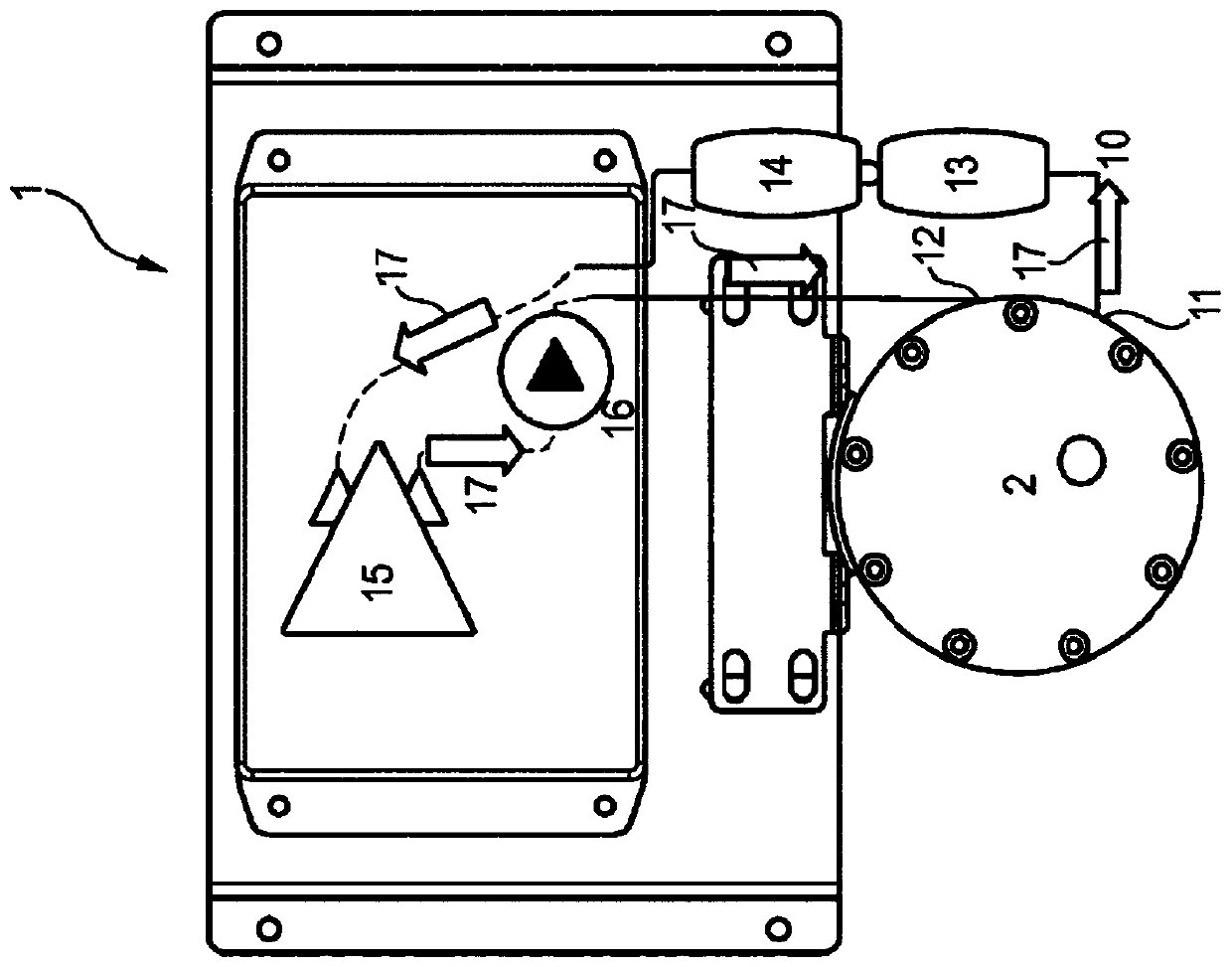Carbon dioxide and/or hydrogen sulfide detection system and method and use thereof
A carbon dioxide and detection system technology, applied in climate change adaptation, water testing, measuring devices, etc., can solve problems such as reducing heat
- Summary
- Abstract
- Description
- Claims
- Application Information
AI Technical Summary
Problems solved by technology
Method used
Image
Examples
Embodiment 1
[0184] Example 1: Regarding CO in Freshwater Samples 2 Gas concentration, comparing two membranes to one membrane.
[0185] The new CO as shown in Figure 1-2 with 2 membranes was first tested 2 Detection system (diagram 1, 2 membranes). Always get 7mg / L free CO 2 gas content. at max CO 2 When the concentration is estimated to be 7mg / L, T 90 (Time to measure 90% of total gas) probably about 4 minutes.
[0186] The new free CO as shown in Figures 1 and 2 with 1 membrane disabled was then tested 2 Detection system (diagram 1, 1 membrane). This setup would correspond to commercially available CO 2 detection system with a single membrane in a membrane block that converts gaseous CO 2 Separation from liquid samples. Obtained free CO 2 The gas content is between 5 and 6mg / L. When the highest CO 2 When the concentration is estimated to be 7mg / L, T 90 Probably about 7 minutes.
[0187] Figure 5a The sample measurement time (in minutes) is shown on the X-axis and the ...
Embodiment 3
[0192] Example 3; Standard diffusion time between measurements
[0193] The new free CO shown in Figure 1-2 with 1 membrane disabled was tested 2 Detection Systems( Figure 5c ), to determine how long it takes for old sample air in the gas circuit to diffuse across the membrane back into the sample water, driven by the gas partial pressure gradient to equilibrium according to Henry's law.
[0194] This test is measuring HCO 3 - Subsequent, where the final concentration in the gas circuit is high.
[0195] This test shows that CO in the air loop 2 It takes about 5-6 minutes for the partial pressure to drop to atmospheric level, or equivalent to 0 mg / l in the sample stream, making it ready for a new measurement.
[0196] The detection system shown in Figure 1-2 includes a membrane block, which is combined with a vent valve device to flush out old sample air from the air circuit. The detection system can reach 0 mg / L ( Corresponds to CO in the atmosphere 2 Level).
[01...
Embodiment 4
[0198] Example 4: H 2 S sensor measurements are compared with expected concentrations
[0199] Some tests were performed to evaluate the H as shown in Figure 1-2 2 S detection system, but with H as described above 2 S detection unit 29 instead of CO 2 sensor 15.
[0200] All tests use the same test sample: fresh water, 20°C.
[0201] In all examples, the sequence of operations up to and during the measurement is the same, and as described in Examples 1-3, which concern detection in a device with two membrane units connected in series CO 2 .
[0202] Each test in the examples was repeated with 2 identical test trials. In all tests, the initial removal of free air bubbles was performed using a closed vessel with a space where free air bubbles in the sample stream could be collected and the sample was withdrawn from the bottom of the vessel.
[0203] In all examples, a water sample flow rate of approximately 500 mL / min was used, and in all examples the pressure in the l...
PUM
| Property | Measurement | Unit |
|---|---|---|
| pore size | aaaaa | aaaaa |
| pore size | aaaaa | aaaaa |
| pore size | aaaaa | aaaaa |
Abstract
Description
Claims
Application Information
 Login to View More
Login to View More - R&D
- Intellectual Property
- Life Sciences
- Materials
- Tech Scout
- Unparalleled Data Quality
- Higher Quality Content
- 60% Fewer Hallucinations
Browse by: Latest US Patents, China's latest patents, Technical Efficacy Thesaurus, Application Domain, Technology Topic, Popular Technical Reports.
© 2025 PatSnap. All rights reserved.Legal|Privacy policy|Modern Slavery Act Transparency Statement|Sitemap|About US| Contact US: help@patsnap.com



